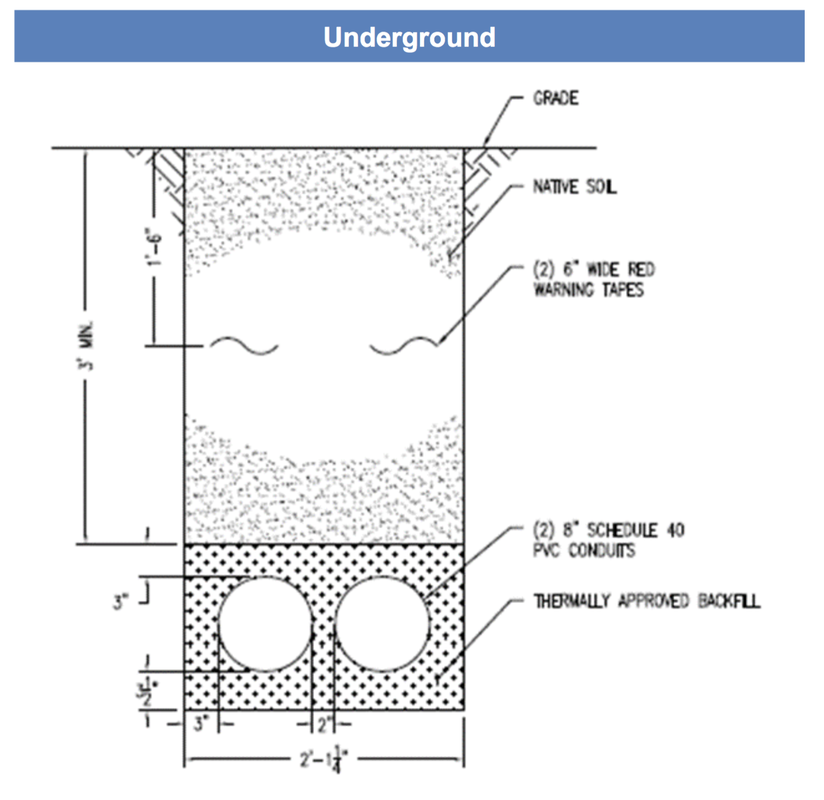Likewise if a transmission developer wants to build a new transmission line buried along an existing right of way, does it inspire landowner opposition?
Why do landowners oppose new electric transmission? Because it's usually an intrusion onto their homes and businesses and sense of place. It requires them to make a huge sacrifice so that others may receive a benefit. Sometimes it's even so that others may profit at the expense of landowner sacrifice.
One of the first solutions landowners often look to when presented with a fully formed transmission proposal across their land is to find a pathway somewhere else, perhaps along existing easements and/or public rights of way. After all, if a project is "for the public benefit," then "the public" should be willing to make this sacrifice for its own benefit, right?
Following closely on the heels of this idea is for the transmission developer to bury its project, out of sight and out of the way, and taking its detrimental health effects and other perpetual burdens with it.
But what if there was a transmission line buried along existing railroad rights of way?
No eminent domain.
No crossing or disturbance of private land.
No new or expanded rights of way.
No unsightly, burdensome towers.
No increased electric rates to pay for it.
What's left for landowners to oppose? I'm sure some people could find something to complain about, but in the grand scheme of things, this is what we've been asking for... for years! And I'm pretty excited about it!
I was intrigued. So, I examined it... gave it the ol' sniff test... gave voice to my suspicions.... and asked for more information. I poked it. I prodded it. I turned it upside down and gave it a good shaking. But at the end of the day I was convinced that if built as planned, SOO Green Renewable Rail could be the vanguard of future transmission.
The project is a 349-mile HVDC transmission line that will be buried its entire length along existing rail corridors in Iowa and Illinois.
"We believe we've built a better mousetrap, and the best part is that it can easily be replicated along other rail corridors," said developer Trey Ward.
Ward confirmed that the entire project will take place on existing rail corridors, where a new kind of slender cable will be buried in a trench approximately 2 feet wide and 5 feet deep. No new land is needed, and access shall be from the rail corridor. No eminent domain.
Let me repeat that... NO EMINENT DOMAIN! The developer has no aspirations to become a public utility in Illinois, and as such would not wield the power of eminent domain. SOO Green has its right of way through Iowa on existing Canadian Pacific rail right of way confirmed, therefore it would have no need for eminent domain in Iowa.
And for all you guys out there who want to know how this can be done, here's your fix. And here's a cross-section of the proposed trench layout.
This isn't old, clunky Clean Line overhead HVDC technology. Clean Line hasn't updated its technology or engineering in a decade (and probably can't now, since it no longer has any electrical engineers). Not only did Clean Line rely on old technology, but it also relied on the forced sacrifice of landowners. This new project has nothing to do with Clean Line whatsoever.
SOO Green Renewable Rail is a "lessons learned" proposal. The developers of this project have been watching and taking notes, and want to avoid any landowner issues.
Perhaps this is a project landowners can support? If it actually gets built, it can serve as an example of how to build transmission. And then we can all point and say, "No, Clean Line, it's not us, it's YOU!"

 RSS Feed
RSS Feed